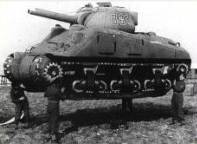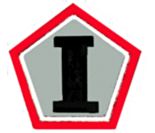|
|
|
 |
|
The Phantom ArmyHow US Intelligence fooled Hitler into believing that the
| |
|
Behind the astonishing success of D-Day was one of the most sophisticated deception schemes ever attempted. Hitler believed that the Allies would land at the Pas-de-Calais, in France because it is located the shortest distance across the English Channel from Britain. The Allies knew that landing troops directly in front of the strongest section of Hitler's "Atlantic Wall" would be suicide, and instead chose Normandy for the actual landings. |
 An inflatable tank that was used to deceive the Germans |
|
To mislead the Germans into believing that Calais would be the site of the invasion, General Eisenhower and his staff created a mythical 1st Army Group and based the phantom force in Britain near Dover, just across the Channel from the supposed target. Eisenhower assigned George S. Patton, the American general the Germans most respected, to command the phantom army.
A variety of methods were employed to convince the Germans that the Phantom Army was preparing for an invasion. Radio operators were assigned to generate enough routine radio traffic for the Phantom Army. Bogus intelligence reports and other documents were "lost". Inflatable tanks, dummy bombers built of balsa wood and canvas landing craft were positioned near Dover where they could be photographed by the Luftwaffe during aerial reconnaissance. Even false marriage and death notices were placed in local newspapers where the "army" was located.
By the time the Normandy invasion finally began, Hitler and his generals had been so thoroughly deceived that they believed it to be a diversionary attack. Instead of immediately moving their reserve units to prevent the Allies from establishing the Normandy beachheads, they continued to wait for what they thought would be the main attack at Calais. Eventually the Germans realized they had been deceived, but it was too late. Allied troops were already fighting their way across northern France. The "Phantom Army" had succeeded beyond anyone's wildest dreams without ever firing a shot. |
|




